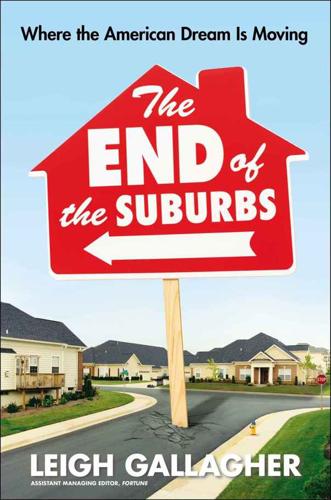
The End of the Suburbs: Where the American Dream Is Moving
by
Leigh Gallagher
Published 26 Jun 2013
But it also made it constitutional for the first time for municipalities to separate the use of their land into buckets, designating certain areas for residential use, others for commerce, and others for industrial purposes. Later, when the FHA required single-use zoning as a condition for granting mortgages, this separation became baked into most new developments. More than almost anything else, single-use zoning permanently altered the look, feel, and overall DNA of our modern suburbs. Even now, single-use zoning is the easiest way to distinguish modern suburbs from their older counterparts. Instead of having a single downtown core with stores, apartments, and offices mixed together in one place, postwar suburbs typically separate everything: subdivisions are off in one area, stores in another, and office space and industrial spaces in others.
…
Then his tone became dark and foreboding: “Today the land surrounding our metropolitan areas is being swallowed up at the rate of one million acres a year, by factories, shopping centers, highways, housing developments, and more housing developments. How did it happen in the span of a single generation?” What the somber-toned narrator didn’t know was that we were just getting started. • • • Both the car and the government made possible one other critical building block of modern-day suburbia: single-use zoning. In 1926, the Supreme Court ruled in a landmark case that the town of Euclid, Ohio, an otherwise unassuming Cleveland suburb, had the right to prohibit a local developer from developing land for industrial use. The ruling itself was well-meaning enough; it was an attempt to prevent the building of noxious waste-spewing factories next door to people’s houses and to preserve the character of the neighborhood.
…
Many places like this are on the East Coast because that’s where the bulk of the older suburbs are located, but they exist everywhere, in places like Lake Forest, Illinois, Palo Alto or San Mateo, California, the Country Club district of Kansas City, or Edina, Minnesota. These suburbs predate single-use zoning, so buildings of all uses are mixed together. There’s usually a clearly defined town center, many residents are within walking distance of the necessities of daily life, and the streets are narrow and generally pleasant to walk on. Residents outside the walking zone might need a car, but the design and placement of the streets and their components naturally encourage walking once they get to town.
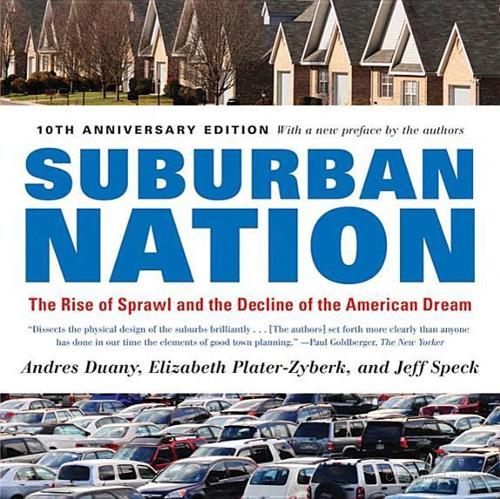
Suburban Nation
by
Andres Duany
,
Elizabeth Plater-Zyberk
and
Jeff Speck
Published 14 Sep 2010
Perhaps the greatest irony is that even industry need not be isolated anymore. Many modern production facilities are perfectly safe neighbors, thanks to evolved manufacturing processes and improved pollution control. A comprehensive mix of diverse land uses is once again as reasonable as it was in the preindustrial age. The planners’ enthusiasm for single-use zoning and the government’s commitment to homebuilding and highway construction were supported by another, more subtle ethos: the widespread application of management lessons learned overseas during the Second World War. In this part of the story, members of the professional class—called the Whiz Kids in John Byrne’s book of that name—returned from the war with a whole new approach to accomplishing large-scale tasks, centered on the twin acts of classifying and counting.
…
Each year, we construct the equivalent of many cities, but the pieces don’t add up to anything memorable or of lasting value. The result doesn’t look like a place, it doesn’t act like a place, and, perhaps most significant, it doesn’t feel like a place. Rather, it feels like what it is: an uncoordinated agglomeration of standardized single-use zones with little pedestrian life and even less civic identification, connected only by an overtaxed network of roadways. Perhaps the most regrettable fact of all is that exactly the same ingredients—the houses, shops, offices, civic buildings, and roads—could instead have been assembled as new neighborhoods and cities.
…
There is no parallel parking, no pedestrians, and certainly no trees. Like many state departments of transportation, Virginia’s discourages its state roads from being lined with trees, which are considered dangerous. In fact, they are not called trees at all but FHOs: Fixed and Hazardous Objects.i 5. Mixed Use. In contrast to sprawl’s single-use zoning, almost all of downtown Alexandria’s blocks are of mixed use, as are many of the buildings. Despite this complexity, it is not a design free-for-all. All of the above characteristics are the intended consequence of a town plan with carefully prescribed details. There is an essential discipline regarding two factors: the size of the building and its relationship to the street.
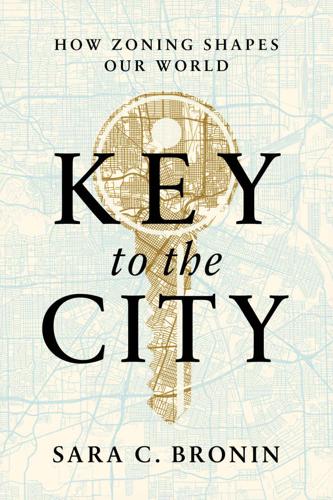
Key to the City: How Zoning Shapes Our World
by
Sara C. Bronin
Published 30 Sep 2024
To understand zoning’s shameful role in creating these parking craters, we should look not at Buffalo’s original 1926 code, adopted during the first wave of American zoning code enactments, but to its second, adopted in 1953, just as the automobile roared into American households and the urban-suburban exodus began nationwide. Many provisions in the second code—from single-use zoning to minimum lot-size mandates to parking requirements—squarely aimed to reorient a dense, vibrant, and walkable city around cars. Around the same time that code took effect, the city doubled down on highway construction and road expansions and dismantled a streetcar system that had successfully ferried passengers for about seventy years.
…
See also Boston, MA maximums and minimums, 92–93, 102–5 agricultural structures, 113 bicycle parking spaces, 103 building heights, 143, 154, 204 lot-size requirements, 73–76, 79, 82–83, 88, 92–93, 99, 105, 126–28, 130, 134, 163, 171, 183, 190, 201 parking requirements, 10, 26–27, 44, 61–62, 73, 96–97, 99, 102–4, 164, 184 unit sizes, 83 May Company, 24–26 MCA Capitol Records, 48 McDonald’s, 10 McDowell Mountains, 128 McKim, Mead, & White, 136 median home values, 19, 181 megablocks, 26 Meier, Richard, 91 Mellencamp, John, 109 Menino, Thomas, 112 Mercurio, Marie, 113–14 Mexican Americans, 17–18, 55 Michigan, 66, 91, 189 “middle housing” proposals, 82 Milan, Mirik, 68 Minneapolis, 80–84, 102–3 accessory dwelling units, 81–83 city council, 81–82 Neighbors for More Neighbors (N4MN), 81–84 rezoning in, 81 “Minnie Vans,” 107 Mission Valley, a neighborhood of San Diego, 23, 25–26, 182 Missouri, 40 Mitchell, Joni, 96 mixed-use districts, 8, 22–27, 99, 142–43, 170 in Baltimore, 31–34, 65 in Buffalo, 102–4 in Delray Beach, FL, 156, 162, 170, 182 in Hartford, 36 in Las Vegas, 162 in Nashville, 47–48, 50 in San Diego, 22–26, 182, 183 single-use zoning vs., 25–27, 99 transit-oriented development and, 12, 101, 104–7, 171 “Mongolians,” 17 Monkkonen, Paavo, 84, 194 Moreno, Vivian, 26 mortgages, 92, 160 mortuaries, 198 Most Endangered Places list, 50 multifamily housing accessory dwelling units, 81–83 condominiums, 16, 77, 131, 167, 196 constraints on, 20, 74–76, 79, 81, 83, 84, 86, 97–98, 101–2, 106, 131, 132, 192 “fourplexes” (four-unit buildings), 81–82 rental housing, 71–72, 81–83, 86–87, 88, 149 “tenement” dwellings, 6, 63, 111–12, 178 municipal governance.
…
See streets and roads Robert’s Western World, Nashville, 61, 187 Rolling Stones, 37 Romanesque architecture, 55 Rome, ancient, 6, 172 Romy’s Hamburgers, Houston, 16, 180 rooftops, 112–13, 114, 127, 132–33 Rothstein, Richard, 92 rowhouses, 29–30, 32–33, 150, 168, 170 “Rust Belt,” 85 Ryman Auditorium, Nashville, 59–60 Sacramento, CA, 103–4, 198 Saks Fifth Avenue, 25 San Diego, CA, 23–27, 31, 102, 105, 142–43, 183, 207 city council, 24–27, 183 downtown, 23–27 Gaslamp neighborhood of, 25 Mission Valley, 23, 25–26, 182 mixed-use districts in, 22–26, 182, 183 upzoning in, 23–27 San Diego River, 23, 27 Sandpoint, ID, 94–95, 102, 104 San Francisco, 88, 103, 107, 151, 178–79, 196, 198 Schuller, Robert, 90–91, 107, 120 Scottsdale, AZ, 129–32, 134, 201, 202 Scott’s Jamaican Bakery, Hartford, 2 Seattle, 104, 132–33, 170, 202 security food, 10, 110–14, 115, 195 household, 5 housing, 88–89 transportation, 10, 93–94 See also poverty segregation, 3, 7, 39–41, 75–80, 83–84, 194 “segregation of the affluent,” 84, 194 self-driving autonomous vehicles, 108 Senate, 36, 82 setbacks, 73, 76, 113, 142, 154, 171, 190 sewer systems, 75, 141, 190 Shedd Aquarium, Chicago, 43 Shenandoah, TX, 181 shipping infrastructure, 64, 158 shopping malls, 24–27 pedestrian malls, 137 strip malls, 3, 15, 44, 153, 154, 165 Shoup, Donald, 95–97 Siegan, Bernard, 167, 190 signage, 6, 10, 147, 161–64, 171, 206, 207 single-family housing, 8, 17, 20–21, 40, 181 in Boston, 105–6 in Connecticut, 92–93, 150 in Garden Grove, 97 lot-size requirements and, 73–76, 79, 82–83, 88, 92–93, 99, 105, 126–28, 130, 134, 163, 171, 183, 190, 201 in Minneapolis, 80–85, 88 parking requirements and, 170–71, 190 in the suburban utopia, 126–27 in Texas, 56, 72–77, 79, 92, 190, 192 single-use zoning, 25–27, 99. See also mixed-use districts Sixth Street, Nashville, 54–59, 80, 187 small-scale artisanal production, 29–38, 100, 116, 120, 170 small-scale housing development, 76, 84, 103 Smart Growth America, 139–40 Sonoran Desert, 129, 201 South by Southwest festival, 55–57, 68 South Shore, Chicago, 39, 42, 185 South Side, Chicago, 39–45, 80, 151, 185 Southwestern Bell, 72 Southwest Freeway, 15 special districts.
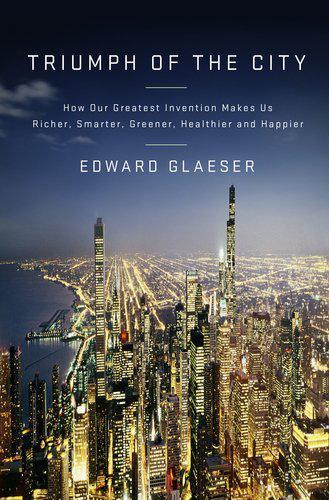
Triumph of the City: How Our Greatest Invention Makes Us Richer, Smarter, Greener, Healthier, and Happier
by
Edward L. Glaeser
Published 1 Jan 2011
Her knowledge came from walking around with her eyes open, which is still the best way to learn how a city works. Gradually Jacobs also started getting involved in fights over urban development. As a Greenwich Village resident, she opposed a plan to run a road through Washington Square Park. While zoning advocates were increasingly pushing for single-use zoning, Jacobs became an advocate of mixed-use zoning, opposing “segregating New York into economically independent islands with endless, dreadful consequences.” She vehemently opposed retail-free public housing projects, deriding them for their single-purpose sterility. She criticized Lincoln Center as a “piece of built-in rigor mortis.”
…
For the government to mandate a single style of urbanism is no more sensible than for the government to enforce a single style of literature. Jacobs’s belief in the value of moderate densities led her to fight against tall structures, such as a nine-story library for New York University, just as she fought against single-use zoning and new expressways. Her urban vision was very much grounded in the experience of her own Greenwich Village neighborhood, with its taverns and thinkers and low-rise townhouses. She liked old buildings and thought that new skyscrapers wouldn’t permit the mixed uses that she loved. Jane Jacobs liked protecting old buildings because of a confused piece of economic reasoning.

Smart Cities: Big Data, Civic Hackers, and the Quest for a New Utopia
by
Anthony M. Townsend
Published 29 Sep 2013
They merely imitate the appearance of the old, its concrete substance: they fail to unearth its inner nature.”1 Alexander was well equipped to see order in the vast complexity of great cities. Though a professor in the College of Environmental Design at the University of California, Berkeley, he was trained as a mathematician and saw the structure and dynamics of the city through mathematical analogies. To Alexander, the sprawl of postwar surburbia, with its single-use zones and cul de sacs, looked structurally like “trees.” In a tree, individual pieces link together up and down in a rigid branching hierarchy, but there are no connections between branches. For Alexander, the architecture and layout of these artificial cities imposed too much top-down order, their individual elements nested like Russian dolls, with each subcomponent enclosed and isolated from those around it.
…
By 2010 nearly one in three adult mobile phone users in the United States had downloaded at least one of more than five hundred thousand different apps available for smartphones.12 Now that it’s on the street, computing will never be the same. The screens of our desktop operating systems like Windows and OSX are like the suburbs, split up into a handful of single-use zones—Microsoft Office, the Web browser, and deeply immersive games. The software ecosystem of the iPhone is instead a mirror image of the urban world it has grown up in—like a great city street, it’s populated by quirky little storefronts that work together to create a fine-grained mix. The iPhone may have come from Cupertino, in suburban Silicon Valley, but its true potential is being realized on the streets of San Francisco, New York, London, and Shanghai.
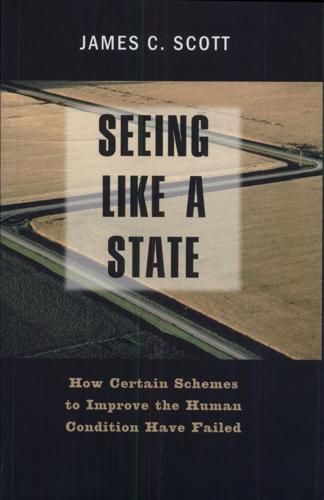
Seeing Like a State: How Certain Schemes to Improve the Human Condition Have Failed
by
James C. Scott
Published 8 Feb 1999
They assumed that people wanted to live in one place and work in another. Jacobs believes they were mistaken, and most important, she is prepared to argue from close daily observation at street level rather than stipulating human wishes from above. The logic behind the spatial segregation and single-use zoning of the urban planners that Jacobs criticized was at once aesthetic, scientific, and practical. As an aesthetic matter, it led to the visual regularityeven regimentation-that a sculptural view of the ensemble required. As a scientific matter it reduced the number of unknowns for which the planner had to find a solution.
…
Once planners applied the formula for a certain number of square feet of commercial space, parceled out among such categories as food and clothing, they realized that they would then have to make these shopping centers monopolistic within their areas, lest nearby competitors draw away their clientele. The whole point was to legislate the formula, thereby guaranteeing the shopping center a monopoly of its catchment area.100 Rigid, single-use zoning is, then, not just an aesthetic measure. It is an indispensable aid to scientific planning, and it can also be used to transform formulas posing as observations into self-fulfilling prophesies. The radically simplified city, provided it is viewed from above, is also practical and efficient.
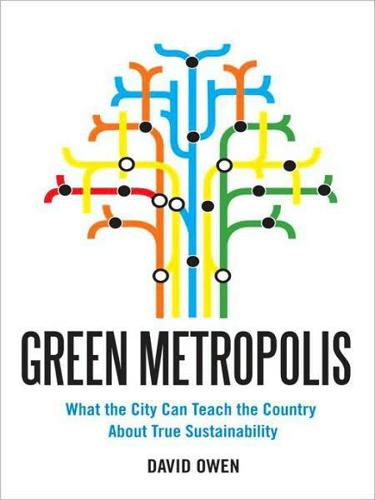
Green Metropolis: Why Living Smaller, Living Closer, and Driving Less Are Thekeys to Sustainability
by
David Owen
Published 16 Sep 2009
Most of the other guests who were on the property were doing what people tend to do at hotels all over the world, no matter where those hotels are situated or how many putatively lush acres their grounds cover: they were attending business meetings, eating, sleeping, or watching TV in their rooms, and those who had left the grounds had invariably done so in cars, since, realistically, there were no local attractions that were accessible on foot or by public transit. EMBODIED EFFICIENCY AND INEFFICIENCY ARE EASY to depict two-dimensionally. Most American suburbs are arranged a little like the dots on the line in the (kindergarten-caliber) graph that follows, in which the round dots represent residences and the square dots, isolated in single-use zones on either side, represent retail shops and businesses: If you imagine that your own house is the star at the very center of the line and assume that an inch or so in either direction represents the maximum distance that you and other members of your family would routinely be willing to travel on foot, you can see that, unless you are borrowing sugar from one of your nearest neighbors, almost any trip you take away from your house, including any trip to any store, will require you to use one of your family’s cars.

Aerotropolis
by
John D. Kasarda
and
Greg Lindsay
Published 2 Jan 2009
The first and most important is the “New Suburbanism,” a deliberate echo (and subversion) of the New Urbanism first practiced by the architects Andres Duany and Elizabeth Plater-Zyberk. They built cities you could walk in— neighborhoods with schools and shops, parks and offices, homes and apartments all mixed together and connected by leafy streets and boulevards instead of access roads and parking lots. Doing this in a prefab, spec-built, single-use zoning universe required writing their own manual, SmartCode, containing not only guidelines for densities but also prescriptions for everything from street widths to rooflines, porches, stoop heights, and even the style of streetlights. In practice, the results were startlingly good—so good they seemed unreal.